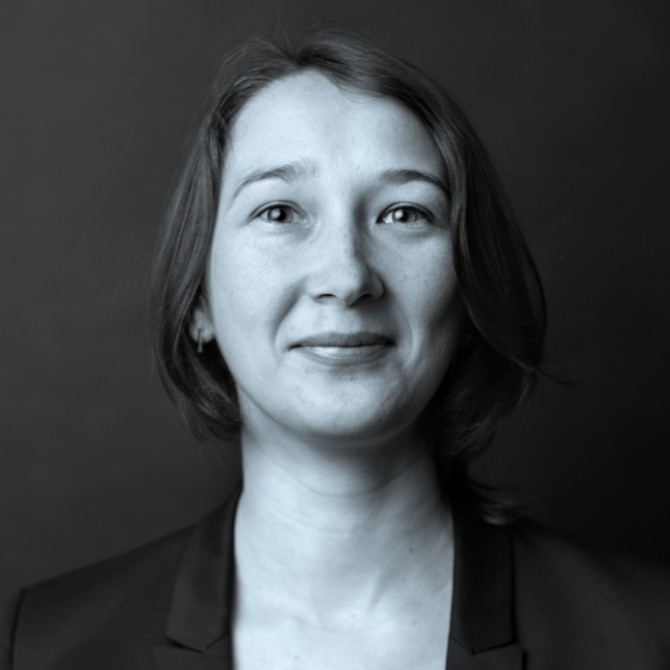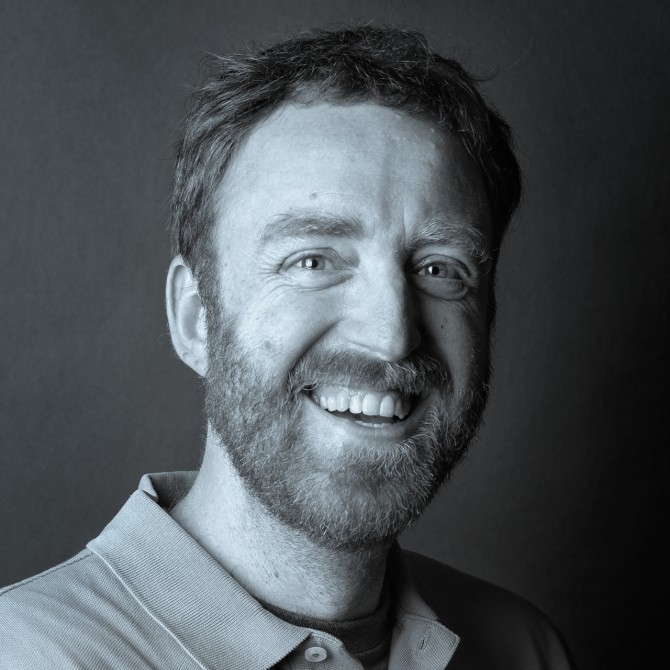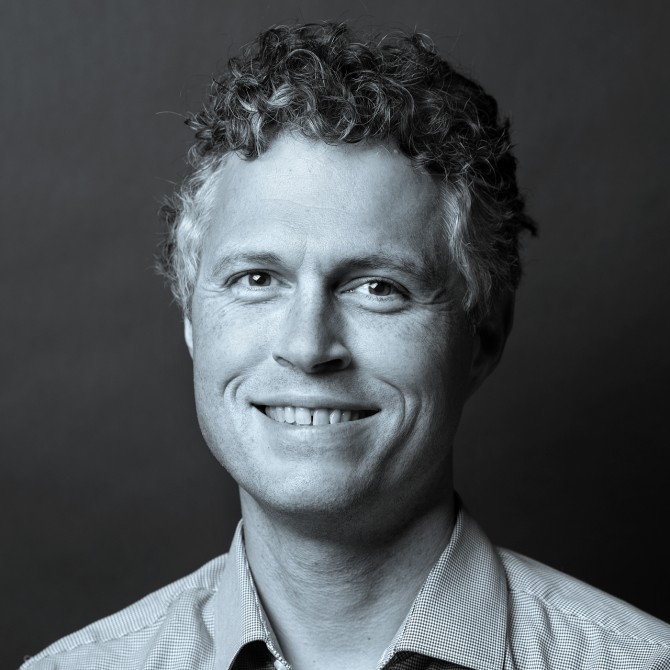Faculty profiles, fall 2019
Elena Belavina: Creating strategies for food waste reduction
If you have multiple grocery stores in your neighborhood, you will waste less food and reduce your carbon imprint on the environment.
That is one strategy Elena Belavina, associate professor in the School of Hotel Administration, has developed in her quest to tackle food waste in the service industry and in consumer households, which together contribute 83% of total food loss in the U.S. each year.
In a study recently accepted for publication in the journal Manufacturing & Service Operations Management, Belavina found that adding three to four more grocery stores in a 10-square-kilometer area in Chicago could lead to a 6% to 9% decrease in food waste. While smaller grocery stores charge higher prices, that cost is offset by the fact that consumers will have less food spoiling in their refrigerators and less refuse going to landfills.
“By going back in time to when we had lots of mom-and-pop stores where you could walk in, get your garlic and a couple of carrots and go home – that would decrease food waste and the emissions associated with it,” she says.
In the hospitality industry, Belavina has been developing a sustainability plan for an international hotel chain that will reduce the amount of food wasted in hotel dining rooms. She has identified 30 strategies that would cut waste – from changing the size of the trays and serving spoons to offering tasting portions of new foods.
In another project, Belavina found that restaurants using a smart food meter developed by London-based startup Winnow to monitor discarded food could, on average, cut waste in half. Of the 150 restaurants studied worldwide, Belavina found that the daily monetary value of the food wasted before adopting the system was almost as much as their daily profits.
Another focus of Belavina’s research is determining how to make bike-sharing systems more efficient. A study she co-authored, soon to appear in Management Science, found that increasing the availability of bikes in a Paris program by 10% would boost ridership by 12%.
Belavina, who previously taught at the University of Chicago Booth School of Business, says the Cornell SC Johnson College of Business offers the opportunity to work with a diverse range of faculty members on the issues of sustainability and food waste. “It’s been amazing,” she says. “There are all sorts of ideas floating around that have been incredibly stimulating.”
– Sherrie Negrea
Charles Danko: How changes in a cell’s programming lead to cancer
Charles Danko can’t remember a time when he wasn’t interested in computers.
As a kid, he played video games on his family’s boxy, beige Apple. By age 12, he had saved enough to buy his own machine so he could program his own games. Now, as the new Robert N. Noyce Assistant Professor in Life Science and Technology at the Baker Institute for Animal Health, he is applying his fascination with computers to tackle fundamental questions in biology and unravel the origins of cancers.
Danko envisions the genome in our cells as a series of software programs. “Every cell has the same set of software, but cancerous cells turn off some programs and turn on others when they shouldn’t,” Danko says.
To understand which programs – or genes, to be specific – are turned on and off in the aggressive brain tumor glioblastoma, Danko is applying a technique called ChRO-seq, developed in his lab. With unprecedented accuracy, ChRO-seq pinpoints the locations of proteins responsible for turning on genes across the genome. Then he uses a computer program to identify those changes compared to healthy brain cells.
By partnering with colleagues at SUNY Upstate Medical University, Danko and his graduate student Tinyi Chu have analyzed 70 glioblastoma tumors with ChRO-seq. They have already identified differences between the tumors that are linked to how rapidly the cancer progresses and patient survival time.
Danko also is working with Paul Soloway, chair of the Department of Biomedical Sciences. Using a molecular tool developed in Soloway’s lab, they plan to identify different types of cells inside the tumor, seeking to understand how the cancer interacts with its microenvironment, such as infiltrating blood vessels and silencing the immune system.
Ultimately, Danko would like to commercialize these tumor analyses to inform personalized cancer care. “I’d love to see every hospital using a robot that does ChRO-seq to test their cancer patients,” Danko says, “and those computers would use code that we write.”
– Patricia Waldron
Leslie Lok: Investigating construction’s novel materials
In her research, teaching and practice, Leslie Lok, assistant professor of architecture, studies the intersection of housing and urbanization as well as novel materials and construction practices.
At a recent faculty retreat, the concept of “informed making” emerged as integral to teaching and research within the Department of Architecture. It’s a core idea that Lok values highly and is central to her professional practice, HANNAH, which she co-founded with assistant professor Sasa Zivkovic.
“We leverage and augment ordinary technology for material, spatial and cultural experimentation in architecture,” Lok says. “Teasing out deliberate idiosyncrasies in the technology and building process, we find non-guilty pleasure in the formal expressions of our experimental prototypes and are deeply committed to making, building and design.”
These investigations into the playful use and misuse of materials and construction methods are evident in some of HANNAH’s recent projects, including “RRRolling Stones,” which won The Architectural League of New York’s Folly/Function 2018 design competition. The project is a movable outdoor seating system made from 3D-printed concrete.
Lok’s other research focus is housing. This year, she received two grants for proposals addressing issues pertaining to housing for the urban-rural fringe in China.
The Cornell China Center awarded Lok a development grant for her project “Learning With Chongqing: Sustainable Urbanization and Housing Models for Urban-Rural China.” The grant supports an interdisciplinary team to develop new design metrics for urban-rural development models.
Using Chongqing as a case study for villages confronting the pressure of urbanization, the team will explore ways for villages to become self-sustainable, with approaches that simultaneously consider ecology, housing, infrastructure and social needs.
Lok recently received an Affinito-Stewart research grant from the Cornell President’s Council of Cornell Women (PCCW) for a related project that connects two lines of inquiry: local housing spatial practices and digital construction methods for a dense midrise urban fabric, as an alternative to the homogenous housing towers at the urban-rural fringe.
Collaborative, interdisciplinary teaching has also been a stimulating and thought-provoking experience, Lok says, noting the fall 2018 Mellon Collaborative Studies Seminar, which she co-taught with comparative literature professor Andrea Bachner.
– Patti Witten
Mert Sabuncu: Searching for secrets in medical imaging data
Advances in MRI scans, ultrasound, microscopy and other biomedical imaging are allowing for the collection of larger, more complex datasets. Hidden within terabytes of data are discoveries that will transform health care and biomedical research, but scientists lack the analytical tools to effectively extract key information.
Mert Sabuncu, assistant professor of electrical and computer engineering, is combining machine learning with computer vision and other techniques to help scientists decode biomedical data. Using a National Science Foundation Faculty Early Career Development Program award, he is developing software to chart the genetic variations in the shapes of brain structures. The project examines tens of thousands of MRI scans, whole-genome sequences and clinical records.
“Finding patterns in the data will help researchers map the effects of genetic, environmental and other factors related to the structure and function of the brain,” Sabuncu says.
Sabuncu also is a principal investigator for the Cornell Neurotechnology NeuroNex Hub, a cross-disciplinary initiative focused on developing new optical imaging tools for noninvasive recording of neural activity in animals. The ultimate goal is to map the brain by connecting neurological activity to behavior. Because millions of neurons can simultaneously activate in correlation to a specific behavior, Sabuncu must develop software that can perform complex statistical analysis to find relevant patterns in the recorded data.
“Cornell has a rich history in groundbreaking interdisciplinary research, particularly in imaging technologies, neuroscience and artificial intelligence,” Sabuncu says. “When you couple that with the outstanding talent, expertise and resources we have across our campuses, we have a unique institution that allows us to push the boundaries of science, technology and health care.”
Sabuncu has engineered several open-source software tools for use in decoding biomedical data, which he makes available to other researchers across the globe.
– Syl Kacapyr
Media Contact
Get Cornell news delivered right to your inbox.
Subscribe



